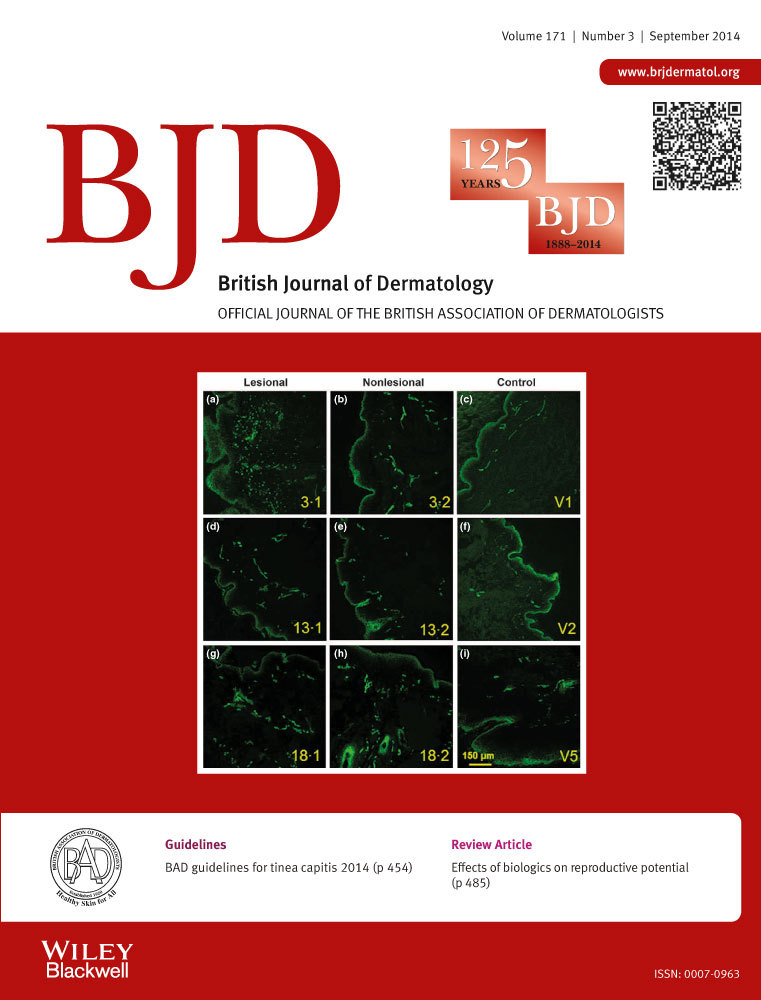Clinical and immunological profiles in 17 Japanese patients with drug-induced pemphigus studied at Kurume University
Summary
Background
Drug-induced pemphigus (DIP) shows clinical, histopathological and immunological features of pemphigus. However, little is known about immunological profiles in DIP.
Objectives
To characterize clinical and immunological profiles in patients with DIP.
Methods
We studied 17 Japanese patients with DIP who were treated at Kurume University Hospital or who consulted from other hospitals between 1997 and 2012. Complicated diseases, clinical and histopathological manifestations, responsible drugs and findings in immunofluorescence, enzyme-linked immunosorbent assays (ELISAs), immunoblotting (IB) and prognosis were analysed.
Results
Eight of the 17 patients with DIP showed pemphigus foliaceus-like appearance, three showed pemphigus herpetiformis-like appearance, and six showed atypical bullous lesions. Responsible drugs were thiol-containing drugs in 16 patients (bucillamine in nine cases, d-penicillamine in four cases, and cetapril, thiopronine and captopril in one patient each), and a nonthiol drug, sulfasalazine, in one patient. By ELISAs and/or IB analyses, nine patients reacted only with desmoglein 1 (Dsg1), four reacted with Dsg1 and Dsg3, and four showed no specific reactivity. By IB of normal human epidermal extracts, in addition to positive reactivity with Dsg1, four patients with no detectable malignancy showed paraneoplastic pemphigus-like reactivity with the 210-kDa envoplakin and the 190-kDa periplakin. Four cases showed anti-Dsg3 antibodies without mucosal lesions. While 11 cases recovered after discontinuation of the causative drugs, six patients had a very protracted or intractable disease course, and might develop true pemphigus.
Conclusions
The present study indicated that the majority of the patients with DIP studied showed a pemphigus foliaceus-type phenotype with anti-Dsg1 autoantibodies, caused by thiol-containing drugs.




